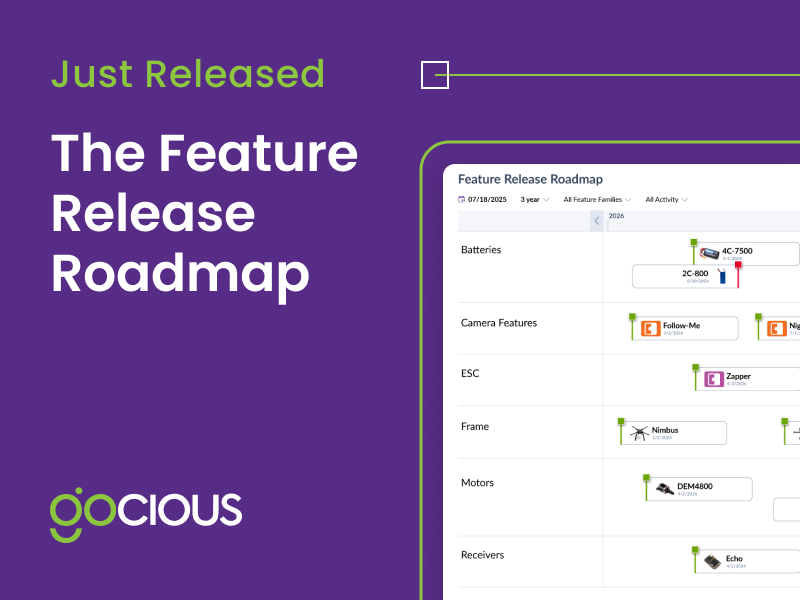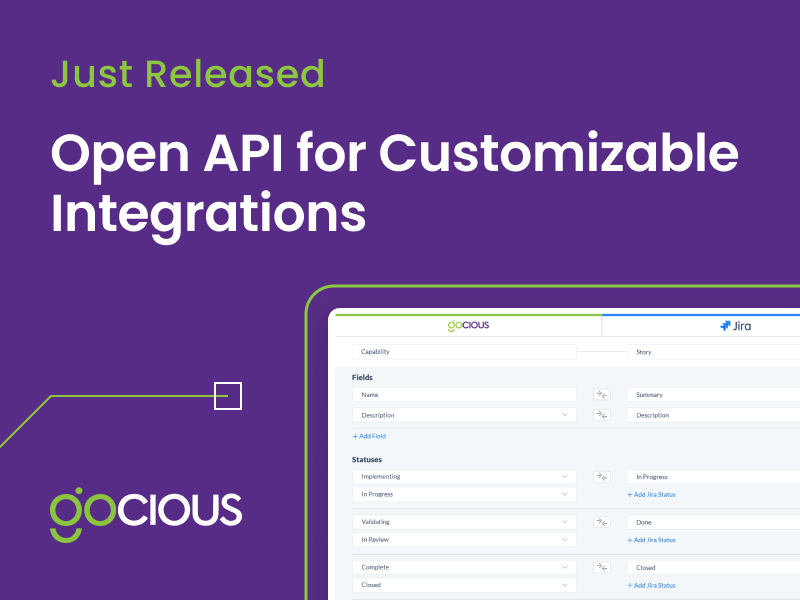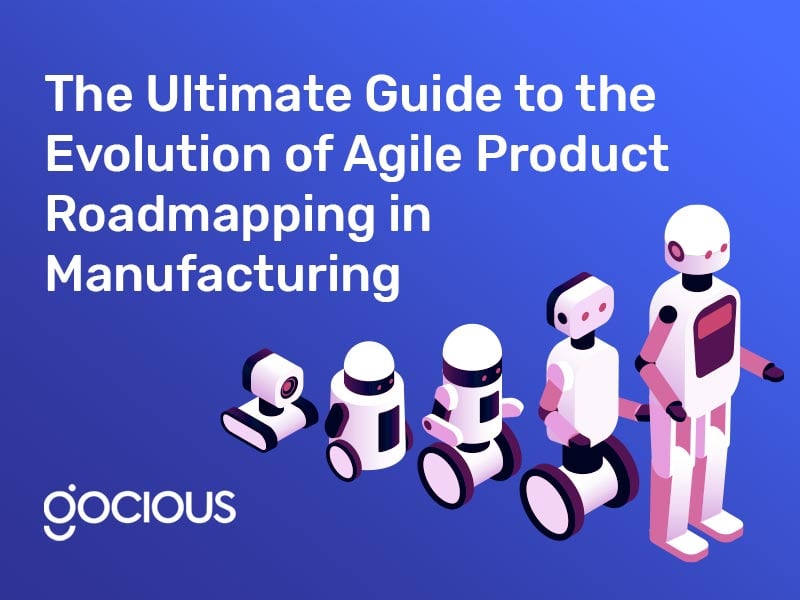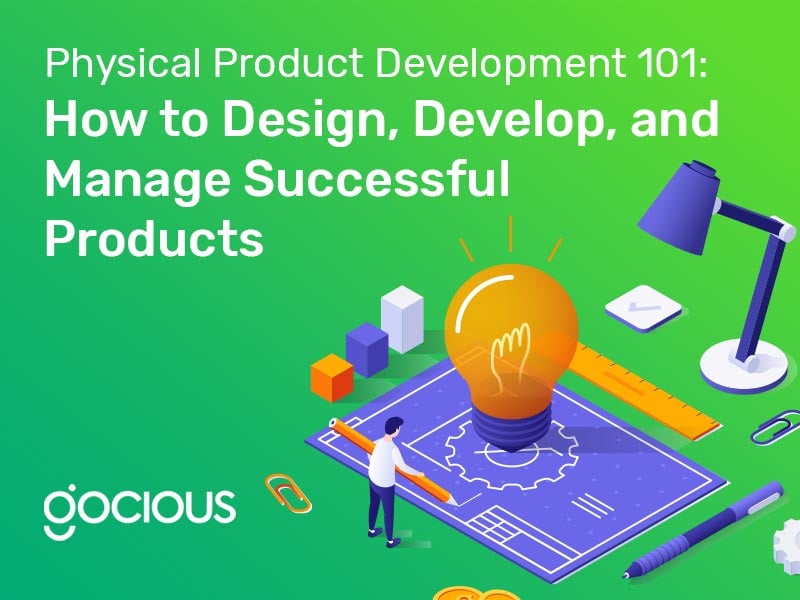
Subscribe to our blog
Ready to improve your roadmapping process?
Curious about how Gocious can help your manufacturing team transform its Product Lifecycle Management strategy? Let’s schedule a call to explore!
Product Management Articles
The Ultimate Guide to the Evolution of Agile Product Roadmapping in Manufacturing
The manufacturing process is complex in scope, strategy, and systems. While innovation can transform every process step from the manufacturing floor to the products themselves, it also adds to the complexity of physical product development. Products require the involvement of more stakeholders than before, bringing together many different opinions, timelines, roadmaps, and requirements.
How Manufacturers Can Leverage the Role of the Product Marketing Manager
When it comes to leadership in the manufacturing world, product marketers and product managers are like two peas in a pod. Both positions require a thorough understanding of the product and their ideal customer's preferences and pain points. The day-to-day of both positions requires strategic planning and cross-functional collaboration to drive customer success.
What Is a Platform Product Manager?
Most customers don’t realize the number of people behind the complex products in their lives. From the product owners and managers to the team leads to the skilled technical employees, it takes a large, cross-collaborative team to design and build complex products. One of those important roles is the platform product manager.
10 Ways Product Roadmaps Empower Manufacturing Leadership
Product roadmaps are essential tools to help manufacturers of all sizes navigate the ever-evolving landscape of innovation and development. The value that dynamic roadmaps deliver will depend on how product teams manage those roadmaps. Making regular updates and tracking key performance metrics (KPIs) is key to ensuring success across the entire product portfolio.
Elevate Your Strategy: Mastering the Art of Product Review Meetings for Peak Performance
Your calendar is full of meetings when you're in the product development world. As tedious as they may feel, many of those meetings are important for your organization. At the executive level, you may be required to give approval on a new product or additional funding or provide feedback on a product in development.
Charting a Path to Sustainability: Mastering ESG Goal Tracking on Your Product Roadmap
In recent years, the global conversation surrounding environmental, social, and governance (ESG) goals has gained significant traction. From corporate boardrooms to legislation to consumer demand, there is a growing interest in issues such as climate change, social inequality, and ethical business practices. But what exactly are ESG goals, why are they important, and how can we effectively track and manage them? In this article, we share some of the best practices for tracking these goals with exciting new features that allow you to monitor and measure your progress directly on your product roadmaps.
Visualizing Product Dependencies for Better Alignment
Modern product development has many moving pieces to oversee and align. The key to staying on top of product development is to use sophisticated product roadmapping tools that keep the relevant stakeholders up-to-date in real-time. A product roadmap management software that focuses on clear visuals and advanced filtering options creates transparency and alignment across the portfolio. Transparency is essential for many reasons, including informing executives on product progress, coordinating stakeholders on decision-making, and prioritizing ideas based on company goals.
Why it Pays to Track Customer Feedback in the Product Roadmap
Ideas for new products or product improvements come from a variety of sources. Sometimes, they result from a stroke of genius, while other times, it’s the reaction to market changes or competition changes. Other inspiration for product improvements comes directly from the customer. When the end-user of your product tells you how they would like to see the product improved or enhanced, and you follow through to deliver on that feedback, you’ll have an advantage at keeping loyal customers and growing your market share.
Physical Product Development 101: How to Design, Develop, and Manage Successful Products
Designing physical products is a thrilling experience, from sharing the initial concept with your team to watching the product take shape during manufacturing and finally having a positive impact on the customer's everyday life. Making physical products is also a lengthy and detailed process. Product managers must collaborate with market experts, engineers, designers, manufacturers, and many more stakeholders to see the product successfully through the launch. Physical product creation relies on experts, materials, technology, and artistry to come to life. Here’s what you should know about physical product development.
Just Released: Advanced Filters Provide Greater Insight into the Product Portfolio Roadmap
Having one central dashboard that allows you to see the entire product portfolio and their release milestones or major shared component adoptions across your products provides a great ability for stakeholders to understand how products come together and whether they are aligned across various teams.
How Does Product Roadmap Oversight Benefit Executives?
As the leaders of a company, executives share the same vision and goals that their teams do. However, executives are more concerned with the long-term strategy of the company than the day-to-day work. Without constantly checking in with their employees, it can be difficult for them to know the status of projects.
How to Lead Your Product Teams to Success in 2024
We're two months into 2024, and your Q1 product initiatives are likely well underway. Setting a strong cadence for effective team processes at the beginning of the year is crucial, especially when deliverables in the following quarters depend on the success of current projects. What can your teams do to ensure their projects continue to progress smoothly?












